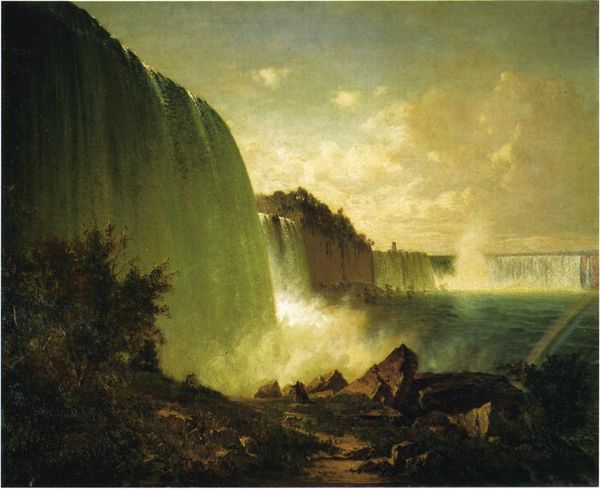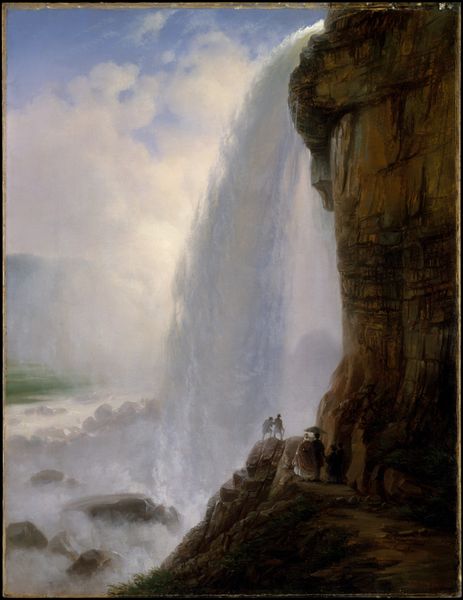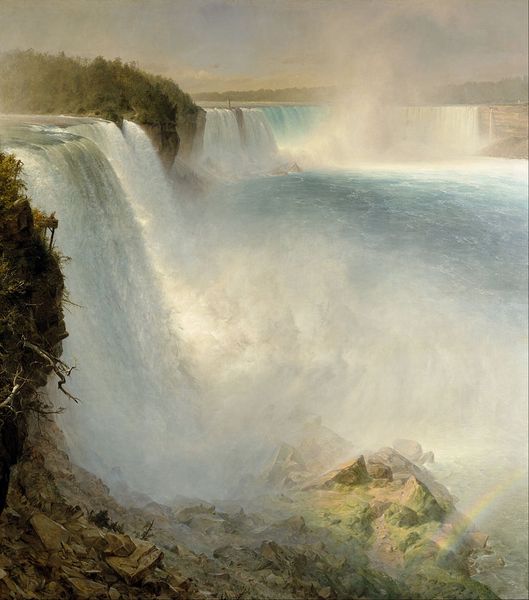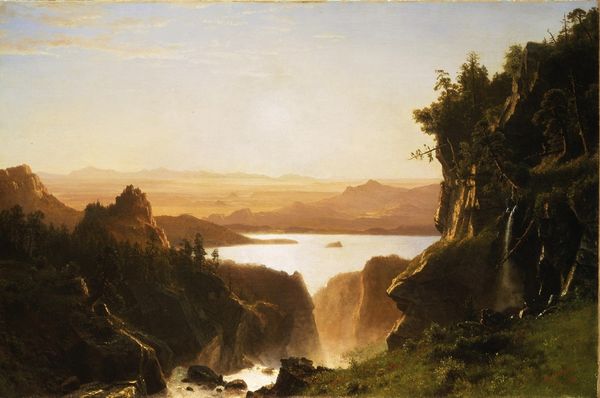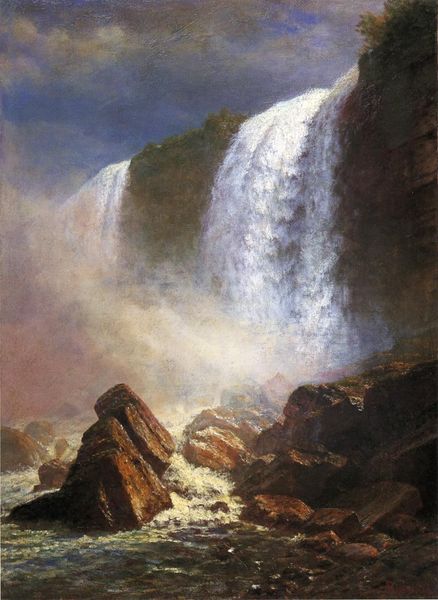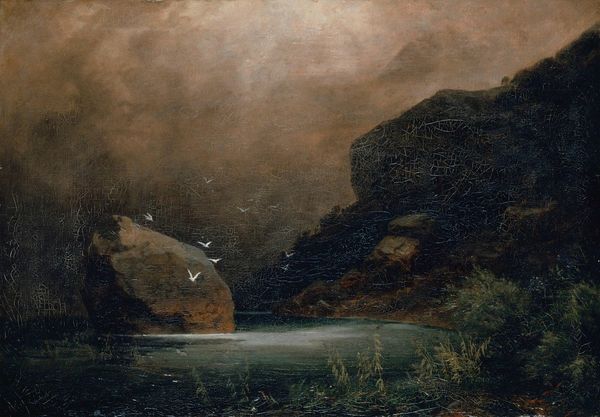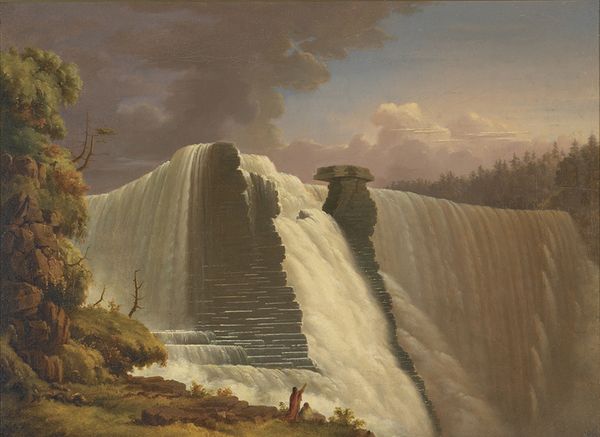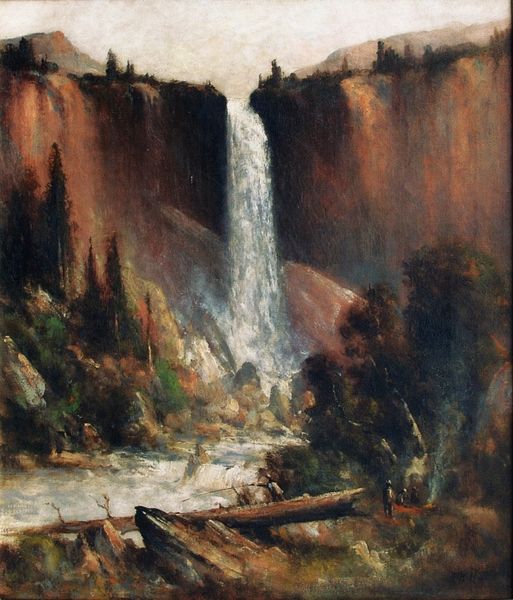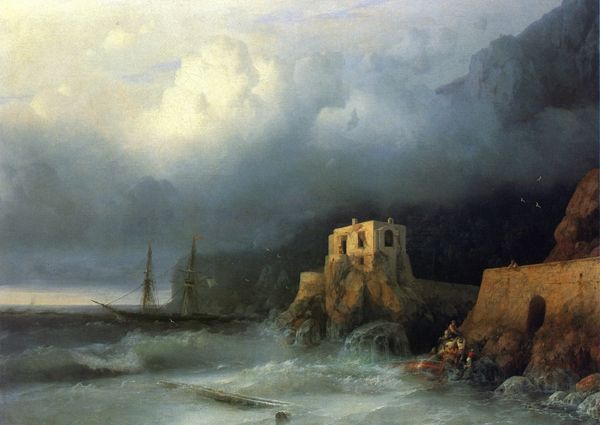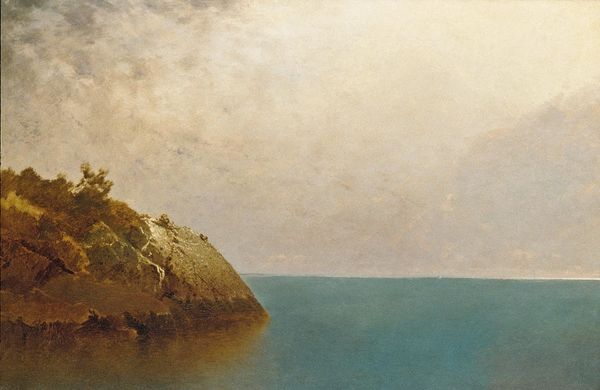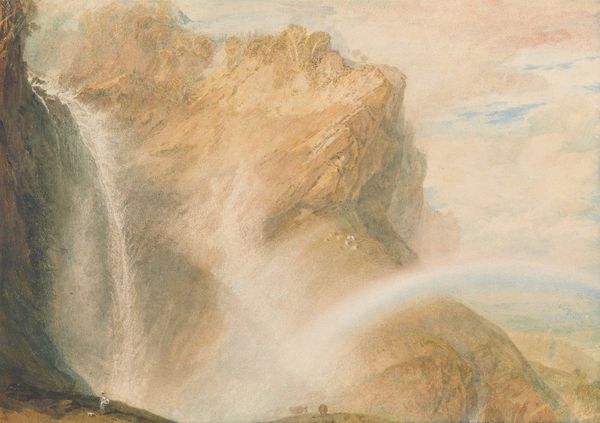
painting, oil-paint
#
painting
#
oil-paint
#
landscape
#
romanticism
#
hudson-river-school
#
watercolor
Copyright: Public domain
Curator: Rembrandt Peale’s painting "The Canadian Side of Niagara Falls" presents us with a majestic landscape bathed in a warm, ethereal light. What are your initial impressions? Editor: It’s certainly a dramatic scene! I'm struck by the density of the impasto, particularly on that rockface to the right. It’s as though Peale used the materiality of the oil paint itself to replicate the roughness of the cliff, emphasizing nature's unyielding physicality. Curator: Exactly! And it reinforces a Romantic concept: the sublime power of nature. That lone figure dwarfed by the immensity of the falls speaks to our own insignificance within this grand design, inviting contemplation of humanity's place within a greater spiritual context. Editor: I’m more drawn to considering the means through which that "sublime" effect was achieved. The scale feels key, right? Paintings of this size—and we should note that "The Canadian Side of Niagara Falls" measures over five feet across—were undeniably impressive objects, luxurious consumer items for those who had both the wealth and wall space to display them. And oil paint wasn't exactly cheap back then, so who paid for these views? Curator: Fair point! Although such depictions also tie into cultural memory of wilderness and its symbolism across civilizations. Waterfalls, for example, often function as thresholds or liminal spaces, emblems of change, of purification... Editor: Perhaps. I wonder how the labor and economics affected such interpretations. How did transporting his art materials, let alone a finished canvas, to a place like Niagara affect the symbolism, or at the very least, how the image circulated to its audience? Did the sheer inaccessibility contribute to the painting's perceived value? Curator: That’s a compelling question! Viewing it now, I sense that the cascade also serves as a memento mori; the figure contemplates existence, our transience, as juxtaposed with that endless churn. It's an image charged with psychological and spiritual symbolism—and the sublime force you so eloquently describe certainly supports this experience. Editor: It’s a balance, surely! Without an awareness of the materials used, or how access to certain landscapes was restricted, we can easily lapse into cliché regarding nature's grandeur. By acknowledging those limitations and barriers, we gain a more complete picture, literally, of what this painting sought to signify.
Comments
No comments
Be the first to comment and join the conversation on the ultimate creative platform.
